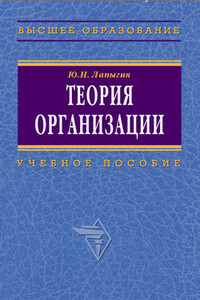Западноевропейское искусство от Джотто до Рембрандта | страница 41
Annibale (1560-1609) was historically the most significant artist of the Carracci family and artistically the most gifted. At first he was fond of Correggio and Veronese, but later he developed new power under the influence of the antique, and of Michelangelo and Raphael, Annibale Carracci presents a variety of motives and themes. To the exhausted schemes of Mannerism he opposed a combination of classical beauty and the respect for the real fact.
In Bologna in the 1580s all three Carracci had been helpful in the formation of a new kind of Renaissance – not a revival of Classical antiquity nor a discovery of the world and of man, but a revival of the Renaissance itself after a long Mannerist interlude. The Carracci aimed at a synthesis of the vigour and majesty of Michelangelo, the harmony and grace of Raphael, and the colour of Titian.
The first major undertaking of Baroque painting in Rome was the gallery of the Palazzo Fornese, painted almost entirely by Annibale CarraccI. The frescoes were commissioned by Cardinal Odoardo Farnese. The ceiling frescoes adopted from the Sistine Ceiling such ideas as large scenes, small scenes, seated nudes, simulated marble architecture and both marble and bronze sculpture. But these were organised according to a new principle in the illusionistic tradition of Mantegna. The simulated architecture applied to the barrel vault is «supported» by the simulated sculptural caryatids and youths that flank pictures into the structure. Four additional paintings with gilded frames are made to look as if they had been applied later. The complex layer of forms and illusions comes to a climax in the central scene.
The subject matter of the Love of the Gods, incompatible with the ecclesiastic status of its patron, veils a deep Christian meaning that accounts for the complex organisation and for central climax. The four smaller lateral scenes represent incidents in which the loves of gods for mortals were accepted, the two horizontal framed pictures depict episodes in which mortals refused, the two end ones reproduce the love of Cyclops Polyphemus for the nymph Galatea, and the central panel portrays the Triumph of Bacchus and Ariadne. This central scene is flanked by Mercury and Paris and by Pan and Selena. The composition in which the chariots of the god and the mortal are borne along in splendid procession, accompanied by deities and Loves explains the framed pictures and justifies the four unframed lateral scenes. The entire complex structure of eleven scenes symbolises the Triumph of Divine Love. After the Mannerist interlude of public prudery, it was typical of the new Baroque attitude that a cardinal could commission a monumental Christian interpretation of ancient erotic myths. It is essential for our understanding of the Baroque that divine love, conceived as the principle at the heart of the universe, should be the motive power that draws together all the elements of the ceiling and resolves all conflicts in an unforeseeable act of redemption. The painting of the Farnese Gallery is a superb creation. The substance and the drive of the Farnese Gallery had a great impact on other ceiling compositions of the seventeenth century, and on Baroque monumental painting in general; especially the work of Peter Paul Rubens was greatly influenced by Annibale's style.




